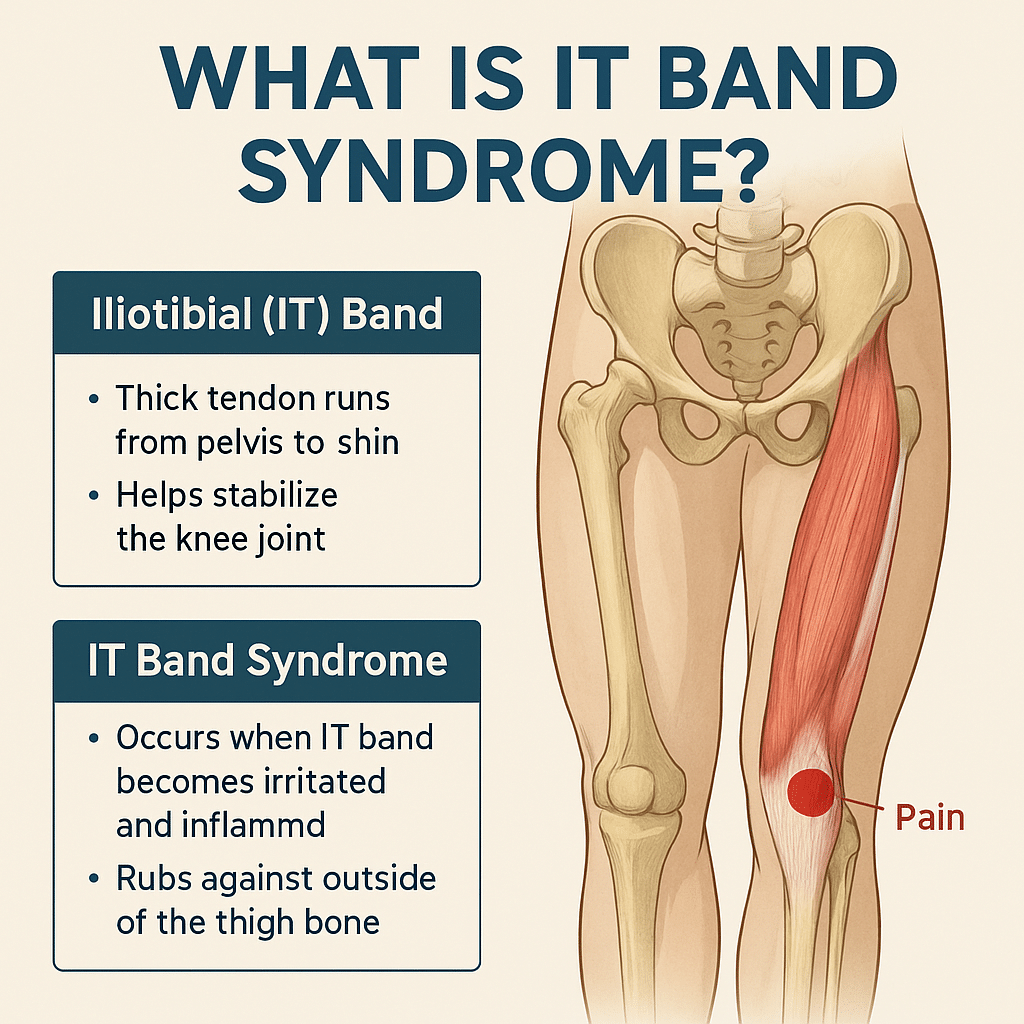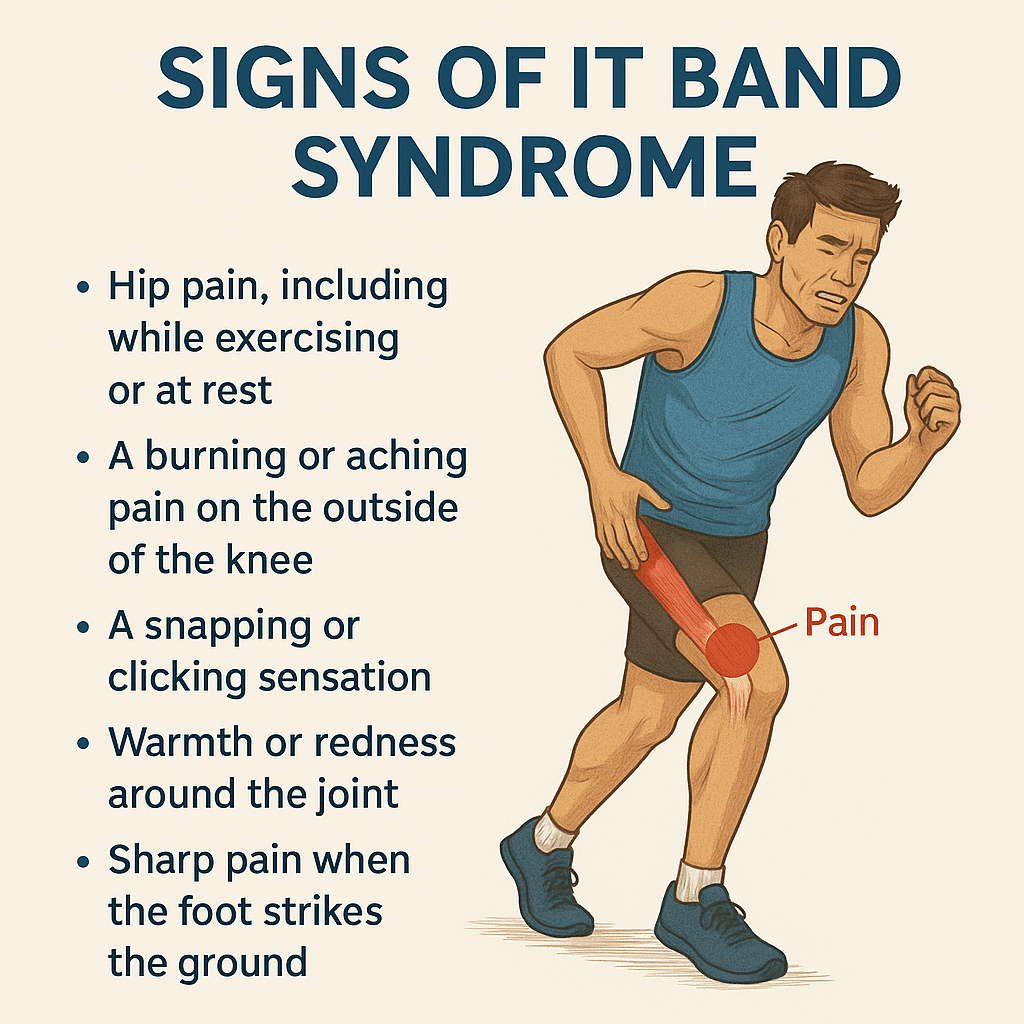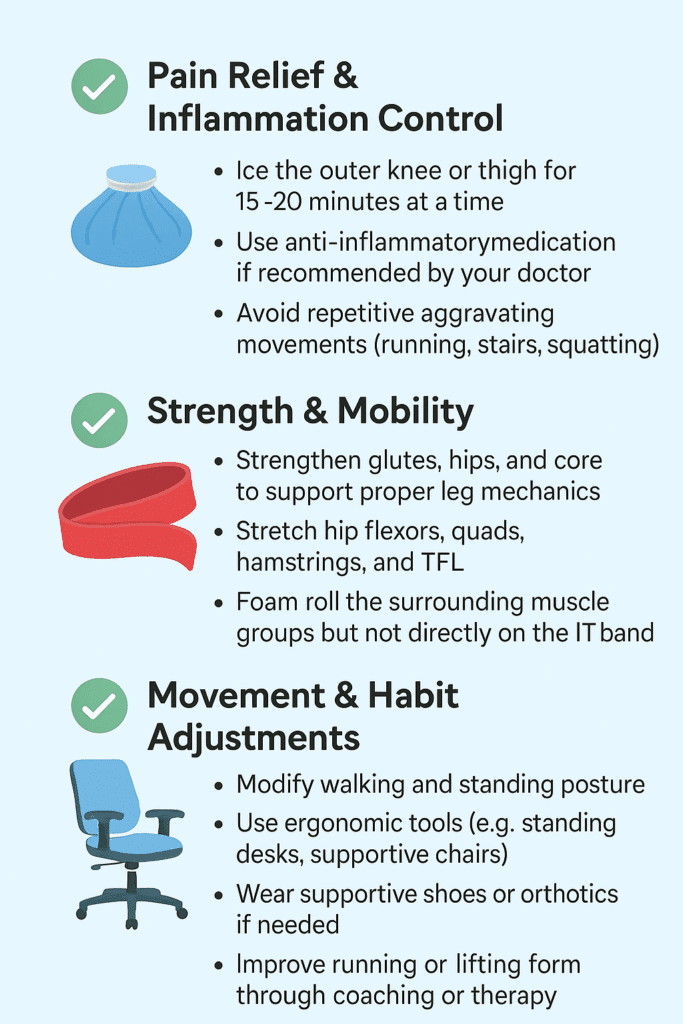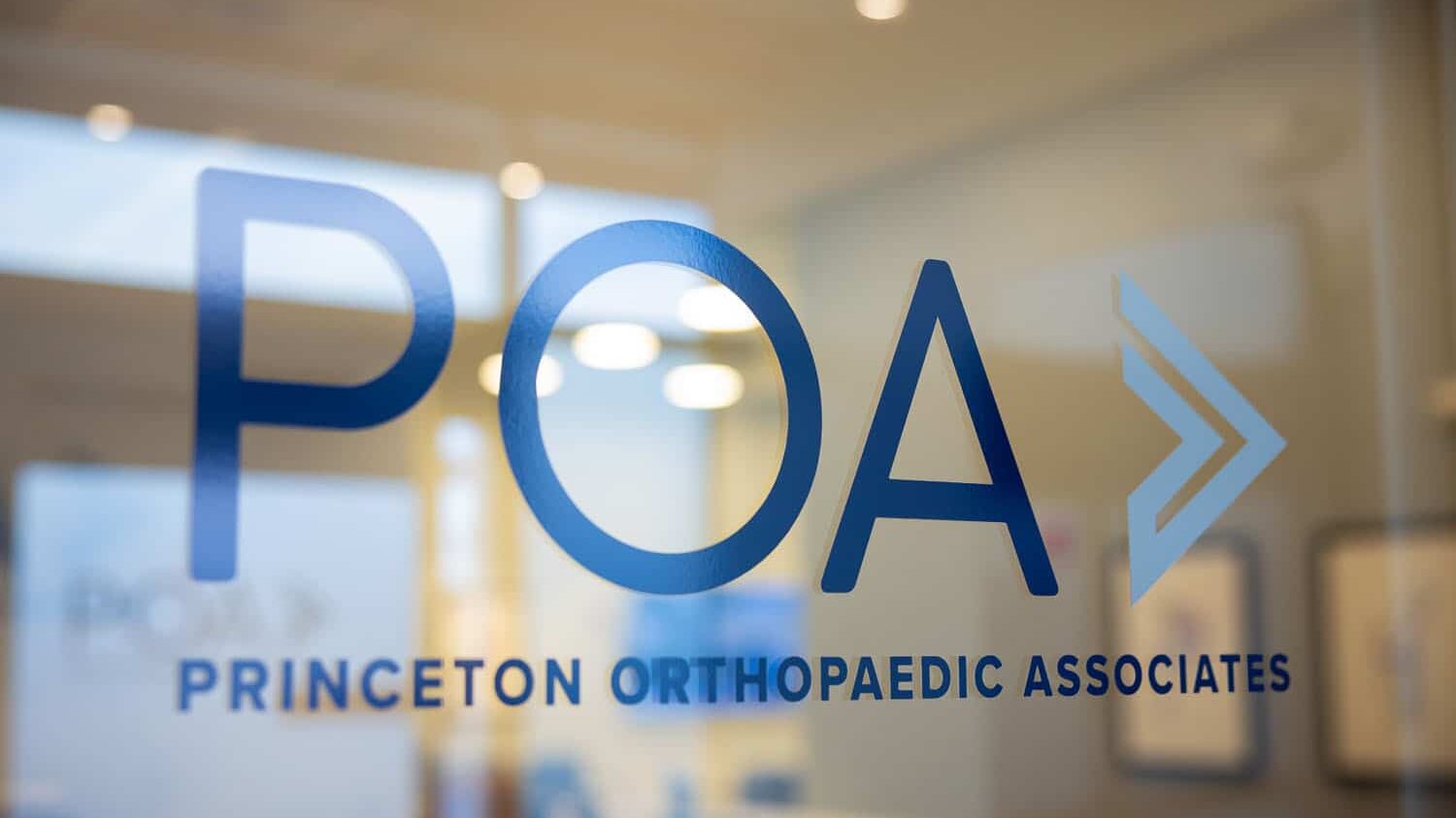
Book An Appointment
Physician Assistants
Physical & Occupational Therapists
KneeMRI ScansNon-OperativePhysiatry
Physical Therapy
Podiatry
Spine
Sports Medicine
TraumaUrgent Care
X-Ray Imaging

You don’t have to be a marathon runner to feel that nagging ache on the outside of your knee. The important thing? It might not actually be your knee. It might be a tight IT band, and unlike joint injuries, it requires a different kind of treatment focused on mobility and muscle balance.
Maybe it starts during your daily walk, or when you’re going up stairs. Perhaps it flares up when you get up from your desk or out of the car. It might even wake you up at night, pulsing in your outer thigh or hip, making it impossible to get comfortable. It doesn’t feel like an injury yet, the pain keeps coming back.
If this sounds familiar, there’s a good chance your iliotibial band (IT band) is involved. And the condition you might be dealing with is called IT Band Syndrome, a common cause of outer knee and hip pain that affects far more than just athletes.
Let’s walk through what’s happening in your body, why it hurts, and most importantly, what you can do to start feeling better.

The iliotibial (IT) band is a thick, fibrous band of connective tissue that runs down the outside of your leg, from your hip to just below your knee. Think of it as a support strap that helps stabilize your knee and assist with hip movement.
When the IT band gets too tight, often due to repetitive movement, muscle imbalances, or poor posture, it can rub against the bone at the outer knee. This creates irritation, inflammation, and pain, commonly known as IT Band Syndrome (ITBS).
And while it’s often associated with athletes, it’s just as common in walkers, desk workers, parents, nurses, retail workers, and anyone who’s on their feet a lot, or not enough.

Here are common, real-world symptoms of IT Band Syndrome in everyday life:
These symptoms often start mild, but become more consistent if left unaddressed.
Even without intense training, everyday habits can contribute to ITBS:
While the core problem is the same (tightness and friction along the IT band), athletes often develop ITBS due to training volume and biomechanics. Common athletic triggers include:
IT Band Syndrome is common among:
💡Tip for athletes:
Strengthen your hips and glutes, cross-train, and make sure your recovery matches your training load
.
The IT band isn’t a muscle, it’s actually connective tissue. That means:
Over time, the friction and inflammation can become chronic and much harder to treat.
Treatment focuses on reducing inflammation, improving mobility, and correcting muscle imbalances.

✅ Pain Relief & Inflammation Control
The length of time to recover from IT Band Syndrome depends on how long you've had symptoms and whether you're treating the root cause:
2-3 Weeks
Rest and stretching may help quickly if caught early
4-6 Weeks
Requires active rehab including movement correction
2+ Months
Long-standing tightness or inflammation takes time to unwind
IT Band Syndrome doesn't just show up during workouts; it can quietly interfere with our daily routine, mobility, and overall comfort. Without treatment, ITBS can impact your:
And for athletes, it can put your training on pause or create a cycle of recurring injuries.
If you have been experiencing symptoms of IT Band Syndrome and you haven't found relief, you should consult with a specialist. Especially if:
At Princeton Orthopaedic Associates, we have physicians from multiple specialties that can help you get to the root of your tight IT band and help set you off on the path to recovery.
-Trained to treat soft tissue overuse injuries like ITBS
- Can differentiate between joint issues and soft tissue problems
- Often the best first stop for a non-surgical, comprehensive evaluation
- Focuses on functional movement and musculoskeletal pain
- Great at managing chronic pain or postural imbalances
-Ideal for cases involving compensations, gait issues, or mobility problems
- Best if ITBS has persisted or if you need advanced imaging or diagnostics
- Also helpful if you suspect other structural issues like meniscus, arthritis, or leg length discrepancy
- A physical therapist is often the next step after diagnosis for hands-on treatment and long-term recovery.
Our specialists will identify the root cause of your tightness, guide you through targeted corrective exercises, and help you improve how you move—not just mask the symptoms.
Whether you're training for a race or just trying to get through the workday without pain, IT Band Syndrome can be disruptive, but it's absolutely treatable. The key isn’t just stretching or resting, it's understanding why the IT band is tight and retraining your body to move in a healthier, more balanced way.

Please contact us! We'd love to help.
If you have pain, please contact us and schedule an appointment. We have urgent care facilities all over New Jersey for your convenience.
This blog post is meant to be informative and should not act as a self-diagnosis tool. If you’d like to see one of our doctors, please contact us here.
© 2025 Princeton Orthopaedic Associates. The contents of PrincetonOrthopaedic.com are licensed under a Creative Commons Attribution-NonCommercial 4.0 International License. Copying without permission is strictly forbidden. Privacy Policy | Accessibility
